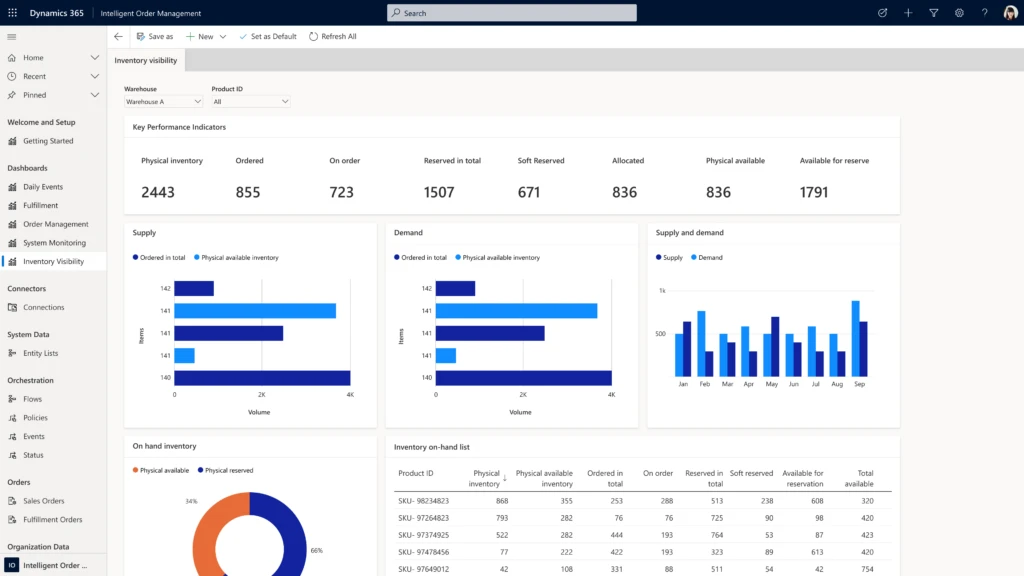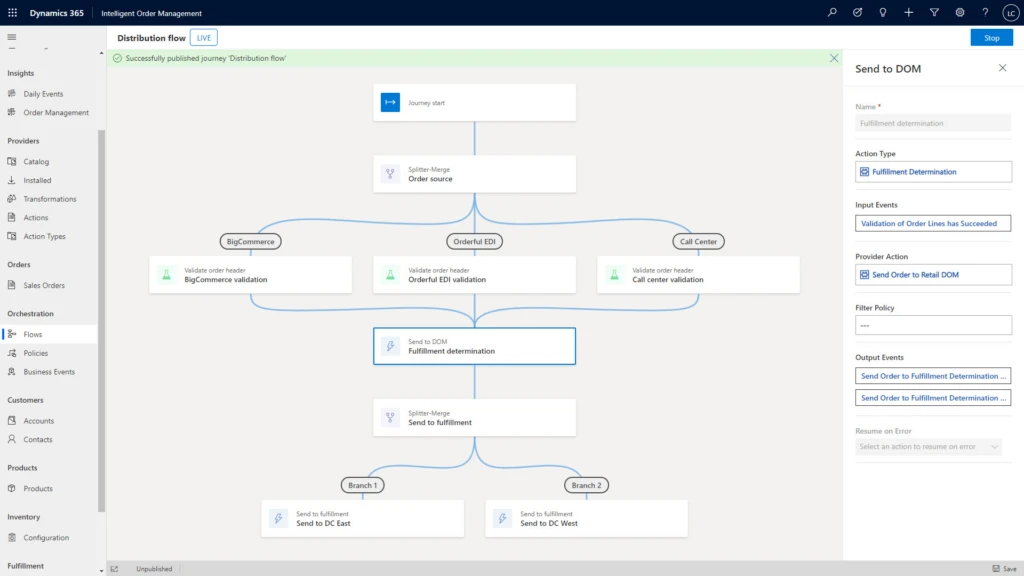
3 key considerations when choosing an order management system
This article is contributed. See the original author and article here.
The COVID-19 pandemic has pushed “order management” from the backend of logistics operations to the spotlight of supply chain and commerce strategies. Retailers, consumer package goods (CPG) companies, and distributors rushed to adapt their business models to fulfill the explosive growth of online orders through different digital channels. End-customers and organizations buy through various channels such as marketplaces, in-store, mobile apps, and even social media. They expect faster and more convenient ways for pickups and returns, such as pickup in-store, at a partner’s location, and for returns, drop off at the nearest location, QR codes, and even at-home pickup.
As the number of order sources and fulfillment options grow exponentially, organizations need the right order management solution to keep up with the evolving digital commerce landscape. This blog looks at three key aspects to consider when selecting an order management solution and how Microsoft Dynamics 365 Intelligent Order Management can help you.
1. Open and modern platform
The adoption of online shopping, and the addition of more consumers and businesses online for all types of transactions with the pandemic, have created a demand for convenience and personalization in digital commerce. As the number of online marketplaces grows, retailers, CPG, distributors, and manufacturers with business-to-business (B2B) and direct-to-consumer (D2C) business models require to accept orders from an ever-growing external ecosystem. Receiving orders from multiple sources increases order management and supply chain complexity. Therefore, these organizations need an order management solution that helps them accept orders from anywhere to keep pace with the continuing evolution of e-commerce.
Dynamics 365 Intelligent Order Management has an open and modern platform that seamlessly integrates with organizations’ existing tech stack. Its architecture reduces implementation time through out-of-the-box pre-built connectors to the best-of-breed ecosystem of partners for order source, delivery, tax compliance, price calculation, and logistics services such as Adobe Commerce, J.B. Hunt, Krber, Uber Freight, Avalara, Vertex, Flexe, Big Commerce, Far Eye, Commerce Tools, Flintfox, Ship Station, and Orderful. Moreover, this platform architecture is composable and flexible to allow supply chain professionals to build in an incremental way through a modular and API-first approach and a supply chain control tower, which ultimate goal is supply chain visibility.
Learn about more extended capabilities in our blog: FedEx and Dynamics 365 reimagine commerce experiences.
2. Real-time visibility and intelligent fulfillment optimization
The 2021 Gartner supply chain risk and resilience survey shows that for 83 percent of large organizations, better supply chain ecosystem visibility is a top priority.1 And another Gartner research shows that 60 percent of chief supply chain officers (CSCOs) are expected to make faster, more accurate, and consistent decisions in real-time.2 The cycle-time of business processes continues to accelerate, particularly in order management processes that serve consumers who expect faster and more convenient shipping to the location of their choice. To succeed in these conditions, companies need a solution that simplifies omnichannel order fulfillment by providing real-time visibility and AI-infused real-time data.
With Dynamics 365 Intelligent Order Management, supply chain and commerce professionals can model and automate responses to order constraints by using a journey orchestration designer and assigning rules in a low-code/no-code friendly user interface with drag and drop actions instead of coding. Dynamics 365 Intelligent Order Management uses an intelligent fulfillment optimization service to infuse AI into order fulfillment within your supply chain network. The intelligent optimization engine works to ensure the right products are delivered from the right source in the right quantities so that you always maximize profits, minimize costs, and satisfy service-level requirements.


3. Faster deployment times
Accepting orders from anywhere carries an additional challenge: implementation. Businesses need an order management solution that allows them to get up and running quickly. Not only do they need to be able to accept orders from anywhere, but many organizations also have existing systems that they would like to augment, not replace. If you are in the process of updating your order management system and fall into this category, then understanding what is involved in the implementation process is critically important. Will custom coding be required to integrate with your enterprise resource planning (ERP) and warehouse management system (WMS)? How about your customer relationship management (CRM) or transportation management system (TMS)? For most, the best solution is a cloud-based integrated-service-as-a-software (iSaaS) that uses RESTful APIs and can be easily configured using a low-code/no-code user interface.
Applications that take this approach enable supply chain and commerce professionals to continue to use and benefit from legacy applications, while also providing the agility to easily connect and integrate with modern web-based solutions. This is the approach that we have taken with Dynamics 365 Intelligent Order Management because it delivers these benefits and accelerates the digital transformation process regardless of where a company is in its digital transformation journey.
You can learn more in our infographic: Top five reasons to update your order management solution.
What’s next?
It is essential to look for an order management solution that will give you out-of-the-box pre-built connectors to an ecosystem of partners, provide real-time order visibility, intelligent fulfillment optimization, and get up you running quickly with seamless integration with your existing tech stacks, such as ERP and CRM systems. Traditional, on-premises order management systems can lack the flexibility required to keep pace with the rapidly evolving world of e-commerce.
With Dynamics 365 Intelligent Order Management, you can leverage our modern cloud technology, integrate with your existing platforms, and quickly implement new capabilities that enable AI, automation, order flow orchestration, and on-demand scalability. Get started today with Dynamics 365 Intelligent Order Management free trial and turn order fulfillment into a competitive advantage.
Sources:
2- Gartner, Reinventing Supply Chain for the Future, Learn four key innovations, 2021.
GARTNER is the registered trademark and service mark of Gartner Inc., and/or its affiliates in the U.S. and internationally and has been used herein with permission. All rights reserved.
The post 3 key considerations when choosing an order management system appeared first on Microsoft Dynamics 365 Blog.
Brought to you by Dr. Ware, Microsoft Office 365 Silver Partner, Charleston SC.



Recent Comments